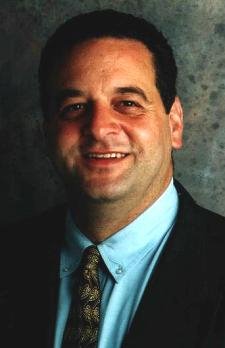Bill Evers and Paul Clopton: Spending without achievement - Marin Voice - Marin IJ July 12, 2006 by Bill Evers and Paul Clopton
Article Launched: 07/12/2006 04:17:00 AM PDT
Bill Evers and Paul Clopton: Spending without achievement
Marin Voice
Marin IJ
July 12, 2006
Bill Evers and Paul Clopton
THE SAUSALITO Marin City School District spends more than $22,000 per pupil and pays teachers an average of $71,000 a year. Based on 2004-05 figures, per-pupil spending is three times the state average, and teachers are the highest paid in Marin. Sausalito is the top-funded urban school district in the state.
But according to 2004-2005 California test scores, only 25 percent of Sausalito sixth-grade students are proficient or advanced in English and 13 percent are proficient or advanced in mathematics. Out of 1,025 districts in California, Sausalito is ranked 724th, which is at the 29.4th percentile. Why aren't students succeeding academically in a school district whose wealth makes almost every other district in California green with envy?
Decades of a different curriculum in every classroom, ineffective and unevaluated teaching practices and teacher training, overemphasis on student self-esteem and low academic expectations created an academic deficit that has been hard to repair.
Teachers who were in Sausalito in the 1980s said money was lavished on fancy cars and exotic trips. An audit in the 1990s found conflicting payroll lists that could not be reconciled.
The 1997 Marin civil grand jury report depicted a district in which large numbers of its elementary and middle-school students were out of control. The grand jury said that teachers were afraid to turn their backs in the classroom. Auditors said teachers and administrators were unwilling to hold students accountable for misbehavior. These problems made the school system a high-dollar heaven that has been at the same time a dysfunctional-district hell.
A 1998 recall campaign changed the makeup of the school board and the administration. While some academic improvement has been made since then, Sausalito remains a chronically low-performing district.
District leaders have recently improved the coherence of the curriculum and adopted a high-performance reading program that emphasizes phonics first, rather than the district's previous whole-language instruction. District leaders also reduced the proportion of children designated as learning disabled. Much of the students' learning problems had been the result of the district's poor teaching of reading, and over-designation of students as disabled had contributed to the alienation of parents from the district. These recent changes have led to some gains in student test scores - principally in the lower grades whose students have benefited from recent changes.
Despite these improvements, the district is still being held back by a legacy of Progressive Education and a reliance on inadequate and misleading districtwide tests. Sausalito has a long history of using Progressive methods of project-based learning and student self-discovery in mathematics and other subjects. Teaching in the district's regular schools and, in particular, in its charter school is heavily influenced by ineffective Progressive methods.
In another guise, these Progressive Education attitudes are found today in the Southern Marin educational establishment: the Education Task Force, the Buck Trust and the Marin Community Foundation. This establishment belittles Sausalito's phonics-based reading program and fails to support training of Sausalito teachers in effective use of that program.
As one of its functions, the task force produces tests used for diagnostic purposes, to guide instruction and to stimulate the creation of Progressive Education teaching strategies. However, after having looked at the publicly released test questions in reading and mathematics, the authors of this article have found that the reading test questions neglect word-attack skills and word recognition and the mathematics test questions are below grade-level and poorly written.
If the Sausalito Marin City schools are to succeed, the district needs to abandon these misleading tests, and it needs to discard the fads of Progressive Education in favor of effective teacher-led classrooms.
The recipe for Sausalito Marin City's success is: High-quality teachers teaching a solid, coherent curriculum in well-disciplined classrooms.
--------------------------------------------------------------------------------
Bill Evers is a research fellow at Stanford's Hoover Institution and member of the institution's Koret Task Force on K-12 Education. Paul Clopton is a research statistician at the U.S. Department of Veterans Affairs Medical Center in San Diego. This column is drawn from their research that will appear this year in a book edited by Eric Hanushek and published by Education Next.


<< Home